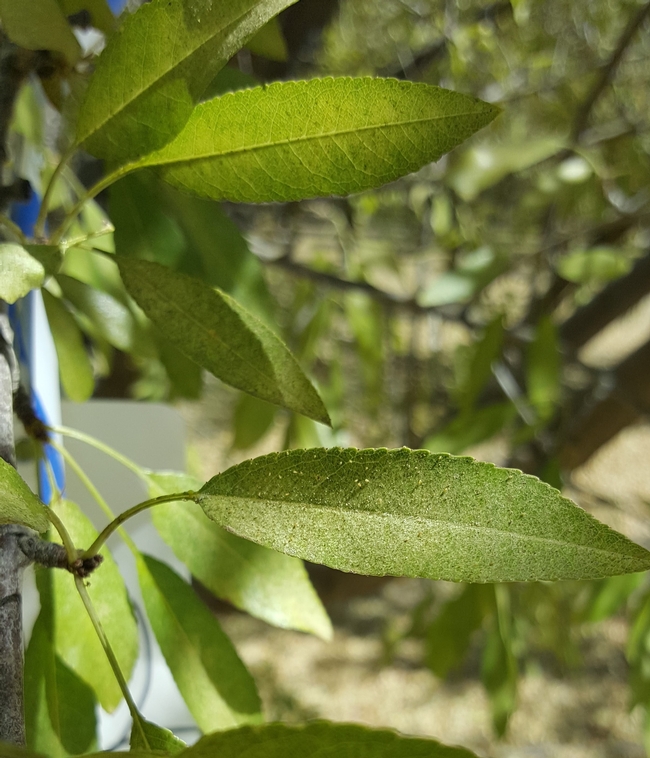Because of UC ANR's IPM research on spider mites and almonds, 80,000 acres were not treated with miticide, saving $2.2 million and reducing CO2 greenhouse gas emissions by 880,000 pounds.
The Issue
The almond industry in California produces approximately 80% of the world's almond supply and currently consists of approximately 1.2 million bearing and non-bearing acres. In an effort to reduce the risk of economic loss from spider mite damage, producers have adopted the strategy of applying a preventative miticide during the month of May – a period when mite populations typically are well below the economic threshold. During the 2017 growing season, approximately 517,000 acres received at least one miticide application during May with a single miticide, abamectin, accounting for 93% of applications. On almond, the strategy runs contrary to sustainable, integrated pest management (IPM) practices. The preventative sprays adversely affect spider mite natural enemies and forgo making a pesticide application based on monitoring and an economic threshold. Finally, the heavy reliance on abamectin has caused some populations in the mid-San Joaquin Valley to become 16-fold more resistant to the miticide than susceptible populations.
How UC Delivers
UC Cooperative Extension Advisor, Kris Tollerup partnered with the Almond Board of California (ABC) and a large-scale almond producer to conduct applied research evaluating the effectiveness of applying a preventative miticide spray. The large-scale field trials provided almond producers with scientific results showing that the strategy does not provide any benefit. To extend the results to his clientele, Tollerup organized field meetings, consulted with growers andpest control advisers, and gave educational presentations stressing sustainable IPM of spider mites on almond. One client attests, "Tollerup has correctly identified the problem and has spoken out both in public and private about not treating unless economic thresholds have been met. Because of Tollerup's role we have been able to collaborate with farmers to hold off on spring treatments at many ranches and only treat when warranted, which has essentially removed a spray treatment on a vast number of our acres."
The Impact
In formal and informal surveys conducted between Dec 2017 and Nov 2019 pest control advisers reported that approximately 80,000 acres did not receive a preventative miticide application in May of 2018 and 2019 growing season. This represents a reduction in treated acres of approximately 5.5%, a savings of about $2.2 million in miticide and application costs. Moreover, we calculated that eliminating the spray reduced the use of diesel-engine application equipment on approximately 56,000 acres - a reduction in CO2 greenhouse gas emissions of nearly 880,000 pounds. Via this research partnership, UC ANR has begun moving the industry away from preventative miticide applications and toward better IPM practices against spider mites. In the coming growing seasons, we anticipate producers will rapidly adopt better IPM of spider mites. For each 1,000 acres on which preventative sprays are not applied, $27,500 are saved and 15,700 fewer pounds CO2 are emitted. In this way, UC ANR increases agricultural efficiency, profitability, and ecological sustainability, contributing to the public values of promoting economic prosperity in California and protecting California's natural resources.
